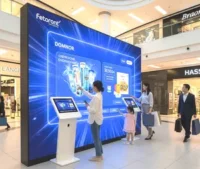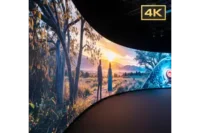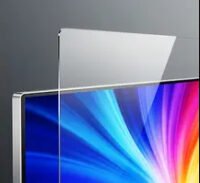LED Screen Applications in Healthcare: Revolutionizing Medical Displays, Patient Systems & Signage
Published: 20 May 2025
LED Screen Applications in Healthcare , The healthcare industry is embracing LED Screen Applications in Healthcare to improve diagnostics, patient communication, and operational efficiency. From high-precision medical display solutions to interactive patient information systems and adaptive healthcare signage, LEDs are redefining how care is delivered. This 3000+ word guide dives into the transformative role of LED technology in modern healthcare settings.

The Critical Role of LED Screens in Modern Healthcare 🚑
Why LEDs Are a Game-Changer in Healthcare
LED screens offer unmatched brightness, color accuracy, and durability—qualities essential for medical environments. Unlike traditional displays, they:
- Reduce eye strain during long surgical procedures.
- Enhance diagnostic accuracy with true-to-life imaging.
- Support real-time data sharing across departments.
Key Applications of LED Technology in Healthcare 🌟
- Medical Imaging & Diagnostics
- Patient Communication & Engagement
- Operational Signage & Wayfinding
Medical Display Solutions:
Precision Meets Innovation 🩺🔬
1. Diagnostic Imaging Monitors
LED screens are integral to radiology, pathology, and cardiology for displaying:
- X-rays, MRIs, and CT scans: High-resolution screens (4K-8K) reveal minute details.
- Color-Critical Applications: Accurate color reproduction for dermatology or histopathology.
Case Study: Mayo Clinic’s Radiology Department 🏥
Mayo Clinic uses calibrated LED monitors to reduce diagnostic errors by 15%, ensuring consistent image quality across devices.
2. Surgical LED Displays
- Real-Time Visualization: Live feeds from endoscopic cameras during minimally invasive surgeries.
- 3D Imaging: Advanced LEDs display 3D models for complex procedures like neurosurgery.
3. Telemedicine & Remote Consultations 🌐
- 4K LED Panels: Enable clear visual communication between specialists and rural clinics.
- Multi-Screen Setups: Compare patient data side-by-side during virtual rounds.
Benefits of Medical-Grade LED Displays ✅
- Durability: 24/7 operation with minimal heat emission.
- Compliance: Meet DICOM standards for medical imaging.
- Hygiene: Antimicrobial screen coatings for infection control.
Challenges to Address ⚠️
- Calibration Requirements: Frequent adjustments to maintain accuracy.
- High Costs: Premium displays can exceed $20,000 per unit.
- Integration: Compatibility with legacy hospital software.
Patient Information Systems:
Enhancing Communication & Care 🗣️❤️
1. Digital Patient Room Signage
LED screens outside rooms display:
- Patient Status: Allergies, fall risks, or isolation protocols.
- Care Team Details: Nurse/doctor names and shift schedules.
2. Interactive Kiosks & Bedside Monitors
- Appointment Reminders: Reduce no-show rates with automated alerts.
- Educational Content: Explain procedures via videos in multiple languages.
- Pain Assessment Tools: Patients rate discomfort using touchscreen sliders.
3. Real-Time Health Data Dashboards
- Vital Signs Monitoring: Track heart rate, blood pressure, and SpO2 on centralized LED walls in ICUs.
- Medication Alerts: Flash reminders for dosage timings.
Case Study: Cleveland Clinic’s Smart Rooms 🛏️
Patients adjust lighting, temperature, and entertainment via bedside LED tablets, improving satisfaction scores by 30%.
Benefits of LED Patient Systems 🌟
- Reduced Anxiety: Transparent updates on wait times or test results.
- Accessibility: Voice commands and larger fonts for elderly patients.
- Efficiency: Automate routine tasks, freeing staff time.
Challenges ⚠️
- Data Security: HIPAA-compliant encryption for patient info.
- User Training: Staff and patients adapting to new interfaces.
- Maintenance: Regular software updates to prevent glitches.
Healthcare Signage:
Navigating Spaces with Clarity 🧭🚨
1. Way finding & Directory Displays
- Interactive Maps: Guide visitors to clinics, pharmacies, or labs.
- QR Code Integration: Scan to download hospital layouts on smartphones.
2. Emergency Alert Systems
- Color-Coded Alerts: Red for code blue, yellow for weather warnings.
- Evacuation Routes: Dynamic LED arrows during fires or disasters.
3. Health Promotion & Campaigns
- Preventive Care Tips: Rotate messages about vaccinations or screenings.
- Donor Recognition Walls: Honor contributors with LED tributes.
Case Study: Johns Hopkins Hospital’s LED Way finding 🏥
LED Screen Applications in Healthcare , After installing LED signage, patient inquiries at help desks dropped by 40%, improving staff efficiency.
Benefits of LED Healthcare Signage ✅
- Dynamic Updates: Instantly change messages during emergencies.
- Multilingual Support: Serve diverse patient populations.
- Energy Savings: 50% lower power use than fluorescent signs.
- Glare Management: Anti-reflective coatings for sunlit areas.
- ADA Compliance: Ensure readability for visually impaired users.
- Content Management: Centralized systems to avoid outdated info.
LED vs. Traditional Displays in Healthcare: A Comparison 📊
| Factor | LED Screens | Traditional LCDs |
| Brightness | 1000-5000 nits (suitable for OR lights) | 200-400 nits (dim in bright rooms) |
| Lifespan | 50,000–100,000 hours | 20,000–30,000 hours |
| Color Accuracy | >90% DCI-P3 compliance | ~70% sRGB coverage |
| Cost | Higher upfront, lower long-term | Lower upfront, frequent replacements |
Future Trends in Healthcare LED Applications 🔮
1. AI-Powered Diagnostic Screens 🧠
- Automated Analysis: Highlight anomalies in X-rays using AI overlays.
- Predictive Alerts: Flag early signs of sepsis via vital sign trends.
2. Flexible & Wearable LEDs 🩹
- Skin Sensors: OLED patches that monitor UV exposure or wound healing.
- Augmented Reality (AR): Surgeons access 3D patient scans via AR glasses.
3. Sustainable Healthcare Lighting ♻️
- Solar-Powered Signage: Reduce hospitals’ carbon footprint.
- Recyclable Panels: Eco-friendly materials for displays.
4. Patient-Personalized Interfaces 🎨
- Mood-Based Lighting: Adjust colors in rooms to calm or energize patients.
- Custom Content: Tailor educational videos to individual health needs.
Conclusion: Illuminating the Future of Healthcare 🌟
LED Screen Applications in Healthcare , LED screen applications are transforming healthcare into a safer, more efficient, and patient-centric industry. By leveraging medical display solutions, patient information systems, and healthcare signage, hospitals can enhance diagnostics, streamline communication, and improve operational workflows. As technology evolves, LEDs will continue to light the way toward smarter, more compassionate care.
FAQs About LED Screen Applications in Healthcare ❓
1. Are LED screens safe for prolonged use in medical settings?
Yes! LEDs emit minimal UV/IR radiation and are flicker-free, reducing eye strain.
2. How do LED displays comply with HIPAA regulations?
LED Screen Applications in Healthcare ,Patient data is encrypted, and screens use privacy filters to prevent shoulder surfing.
3. Can LED signage withstand hospital disinfectants?
Medical-grade LEDs have IP65+ ratings and chemical-resistant coatings.
4. What’s the ROI for hospitals investing in LED systems?
Savings from reduced errors, energy costs, and staff efficiency often offset upfront costs in 2–3 years.
5. Do LEDs interfere with medical equipment?
Properly shielded LEDs meet EMC standards to avoid disrupting devices like MRI machines.

- Be Respectful
- Stay Relevant
- Stay Positive
- True Feedback
- Encourage Discussion
- Avoid Spamming
- No Fake News
- Don't Copy-Paste
- No Personal Attacks



- Be Respectful
- Stay Relevant
- Stay Positive
- True Feedback
- Encourage Discussion
- Avoid Spamming
- No Fake News
- Don't Copy-Paste
- No Personal Attacks




